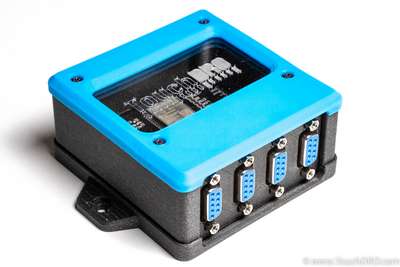What is TouchDRO?
TouchDRO is a tablet-based DRO that lets you turn your Android tablet into a powerful, easy to use touchscreen digital readout. It provides an unparalleled flexibility, ease of use, and professional-grade features to hobbyists, machine shop enthusiasts, and small machine shops.
Modern Android tablets have crisp, easy to read, multi-touch color displays, powerful processors, ample storage, and great connectivity. As a result, with TouchDRO you will get functionality, flexibility and ease of use that you won't find even on high-end DROs from Heidenhein, Acu-Rite, Newall, Fagor, and others.
TouchDRO does everything a traditional DRO can do, but it does it better, faster, and more conveniently. Plus, it will let you do things that a traditional digital readout won't even dream of.
Architecture Overview
A TouchDRO-based DIY DRO requires three components to function: a set of position encoders (DRO scales), an Android device running the TouchDRO app, and a wireless scale adapter that lets the app get data from the scales. The fact that the system is not monolithic makes it much more flexible. On the other hand, there are more choices to make. To help you better understand what's involved in putting together a DIY TouchDRO digital readout, let's look at each component separately.
TouchDRO Application
TouchDRO is a free Android application that runs on most modern Android phones, tablets, and even some Chromebooks. It can be installed from the Google Play Store free of charge or ads. Once installed, the app can be configured to suit your particular needs. Things like machine type, number of readouts, tachometer display, readout precision, and other parameters are easily configurable from within the application with just a few clicks. The settings are organized into "configuration banks" that can be switched with one click, so a single tablet can be used with multiple machines or machine configurations.
The current version of the TouchDRO application has very modest system requirements. It works very well on a 7" tablet running Android OS 4.0 or later and truly shines on a 10" or larger tablet running a more recent OS version.
Position Encoders
Quite obviously, a digital readout system requires a set of position encoders to measure the position of the cutting tool in relation to the workpiece. Therefore, when building a DIY digital readout, the most important decision is the type of scales the DRO will use.
The majority of mainstream commercial DROs use glass or magnetic scales since the scales offer good balance of cost, reliability, and resolution. As Chinese glass DRO scales have come down in price, they are becoming more common in hobby setups. That said, budget-conscious hobbyists still favor capacitive scales for their do-it-yourself DROs. Although these scales have some tradeoffs, they cost half as much as the cheapest glass scales and work well enough for smaller hobby machines. Finally, for some special conditions, a do-it-yourself DRO might use a rotary encoder in some sort of rack-and-pinion setup or coupled to a lead screw.
TouchDRO supports most modern glass and magnetic scales that output 5V quadrature signals and an overwhelming majority of common capacitive scales. When choosing the DRO scales, there are some important factors to consider besides the price. You can read more about this on the Understanding DRO Scale Parameters page. If you decide to go with capacitive scales, please take a look at the list of Compatible Capacitive DRO Scales to make sure that your scales are supported.
TouchDRO Scale Adapter

A TouchDRO adapter is a digital interface circuit whose job is to condition and decode the signal from the scales, convert it into a standard format, and transmit to the application via BlueTooth. Although it doesn't look like one, a TouchDRO adapter is basically a small purpose-built computer that runs a custom piece of embedded software to do all the necessary processing. There are a few different versions of the firmware that can be loaded into the adapter to make it work with various types of scales. The combination of the firmware and input conditioning circuit determines which types of scales an adapter will support.
Scale adapter circuit is intentionally designed to be easy to scratch-build. It is based on Texas Instruments Value Line MSP430 Launchpad and uses readily available components. Required firmware is available as a free download from the Downloads page. Total build time is usually no more than a few hours.
Alternatively, the most common adapter configurations can be purchased as fully assembled, programmed, and tested board from the TouchDRO store. Functionally, the DIY circuit is no different from the equivalent pre-built version, so the tradeoff is between cost and convenience. I.e. a pre-made adapter costs two-to-three times more than a scratch-built one, but all of the assembly, programming, and testing is done for you.
Summary
TouchDRO provides an easy way to build a powerful DIY DRO that offers features of a top-shelf digital readout at a fraction of the cost. Thanks to its modular architecture and touch-based graphical user interface, TouchDRO is an extremely versatile DIY DRO system that can be adapted to work with numerous scale types and many different machine configurations. Since the application and scale adapter firmware are available free of charge, it's possible to build a TouchDRO based digital readout from commonly available components very inexpensively. Alternatively, a few of the common adapter configurations are offered as fully assembled boards.
